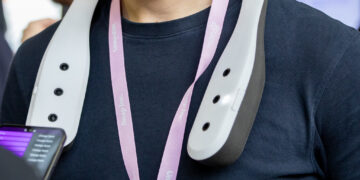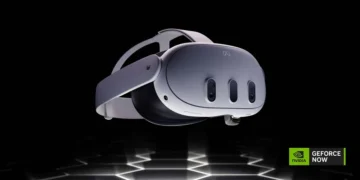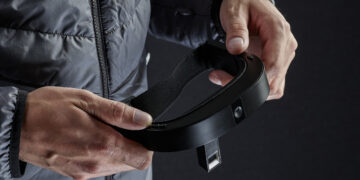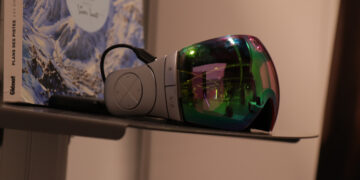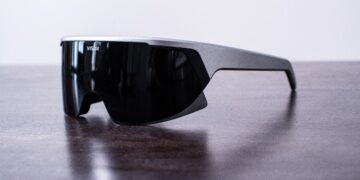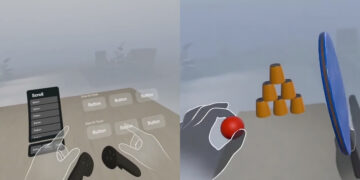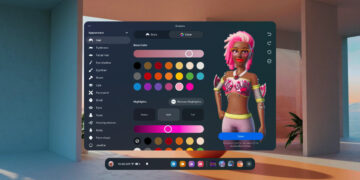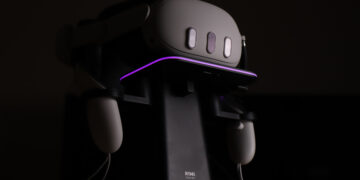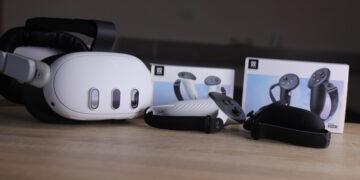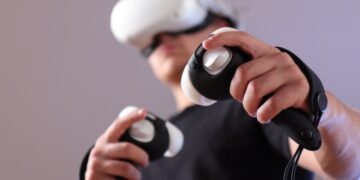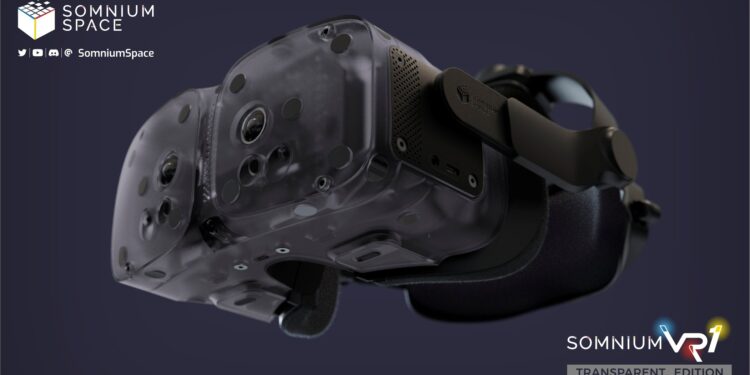Somnium VR1, the VR (and MR) Headset from Somnium Space, has recently received an update highlighting its upcoming features.
Somnium Space, the company behind the blockchain-based open-source VR game of the same name, has recently unveiled an update to their VR Headset, called Somnium VR1. The headset was showcased in static form at CES in January, and now the company has announced its latest features and improvements.
The earlier version of the headset specifications was truly impressive, boasting a range of high-end features. It was set to include dual 2880×2880 HDR 90Hz LCD panels, manual IPD adjustment, aspheric lenses, a wide FOV of 120° horizontal and 100° vertical, eye-tracking, Ultraleap’s hand-tracking technology, and more.
However, what truly distinguished this headset was its notable modularity. Potential buyers were given the freedom to select the desired features they wanted from the headset, allowing for customization according to their preferences. The concept behind Somnium VR1 was to serve as an open-source and creativity tool for people who enjoy tinkering, and also as a high-end PCVR Headset for enthusiasts.
The latest Medium post from the company offers valuable updates regarding the headset. While we highly recommend reading the post in detail to delve into the device’s specifications, we will highlight the key features and enhancements that the headset is expected to incorporate.
Comfort and Field of View
According to the article and video, the creators of the headset have successfully enhanced comfort by implementing improved weight distribution specifically tailored for long-term use.
The optics of the Somnium VR1 have recently entered mass production – The headset will incorporate dual aspheric lenses, offering an impressive field of view of 125° horizontally and 100° vertically. To provide some perspective, the Valve Index features a field of view of 108° and 104° respectively.
What makes it interesting is that the actual FOV may vary depending on the individual’s IPD. The CEO of the company, with an IPD of 64, has managed to achieve a FOV of 128° horizontally and 102° vertically for himself. This underpromises overdeliver approach, akin to what Bigscreen is doing, may result in some users experiencing a higher FOV than advertised.

Displays in the Headset
Somnium VR1’s screen will maintain a resolution of 2880 x 2880 per eye, no updates here. However, what we do have is a specific measurement of pixels per degree (PPD), which is an impressive 35. This places it in the same league as the Pimax Crystal, which also boasts the same PPD.
The headset will feature a brightness of 210 nits, which is slightly lower than the reported 265 nits of the PSVR2. The PSVR2’s brightness has been described as so intense that players could actually feel the heat of the sun in the game.
While some may view these statements as exaggerations, it’s possible that these people were referring to the HDR experience that the PSVR2 featured. The HDR will be also present on Somnium VR1 – The headset is set to feature a contrast ratio of 20000:1 with Local Dimming enabled, allowing for dynamic backlight control. The refresh rates available will be 90Hz, 120Hz, and an experimental 144Hz option, providing users with smooth visuals.

Mixed-Reality with Hand and Eye Tracking
The next notable feature of the Somnium VR1 will be its mixed reality capabilities. Users will have the option to purchase the headset with two 12-megapixel cameras with a resolution of 4056×3040 each. This addition will greatly benefit those who wish to utilize the headset for an exceptional mixed-reality experience, positioning it as one of the leading options currently available (though the upcoming Apple Headset may potentially surpass it).
An optional eye-tracking module will be available for purchase alongside the headset. This feature will enable users to enjoy social gaming experiences by utilizing eye-tracking technology and benefiting from foveated rendering, which effectively reduces the GPU load.
Hand-Tracking will also be available as an optional add-on for the HMD, alongside mixed-reality cameras and Eye Tracking. The advanced Hand Tracking functionality will be powered by UltraLeap technology.
The weight of Somnium VR1 may vary between 700-850g, depending on the chosen features. Additionally, the headset will come with a detachable 6-meter (20ft.) cable, which can be removed to enable wireless connectivity between the headset and PC in the future.
Production of the headset is scheduled to commence in the Czech Republic, a member of the European Union, later this year. The creators have stated that updates regarding the price of the device will be announced in the upcoming weeks or months.

